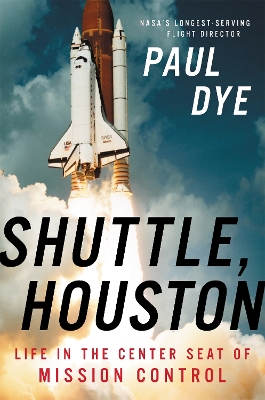
Offering a compelling look inside the Space Shuttle missions that helped lay the groundwork for the Space Age from the perspective of those tasked with making them happen, Shuttle, Houston explores the determined personalities, technological miracles, and eleventh-hour saves that have made human spaceflight possible.Relaying stories of missions (and their grueling training) in vivid detail, Paul Dye, NASA's longest-serving Flight Director, examines some of the highest-stakes split-second decisions that the directors and astronauts were forced to make in a field where mistakes are unthinkable, where errors lead to the loss of national resources -- and more importantly one's crew. Dye's stories from inside Mission Control explain the mysteries of flying the Shuttle -- from the powerful fiery ascent to the majesty of on-orbit operations to the high-speed and critical re-entry and landing of a hundred-ton glider.The Space Shuttles flew 135 missions -- surviving initial test flights and the early days of deploying satellites as well as enabling the assembly and servicing of the International Space Station. Astronauts conducted space walks, captured satellites, and docked with the Mir Space Station, bringing space into our everyday life, from GPS to satellite TV. Putting readers in the shoes of Mission Control, the hub that made humanity's leap into a new frontier possible, Dye gives readers his own front-row seat on the missions that changed our world.
Fascinating. This book is from a guy that started in NASA in the era right after Apollo and seemingly left right as SpaceX and the other private space agencies were finding their first successes. It is highly technical, yet also very approachable - Dye actively tries to explain as much of his "NASA-speak" (his term) as possible while not getting bogged down in too many details. This covers the entirety of his 40 ish years in NASA, from his first days as a co-op student through his last years planning the recovery missions should a Shuttle be stranded in space in the years after the Columbia disaster. Great insight and sometimes hilarious stories, though it ultimately suffers from the same bad taste of an ending that soured Kranz's Failure Is Not An Option. In its final chapter, it more often comes across as a bitter old man not understanding the new dynamics of the agency he helped mold, rather than as someone truly hopeful for the future of space exploration and what the promise of the new and immediately future eras. Still, a truly worthy read from one of the people who doesn't have the name recognition of a Kranz or a Chris Kraft, but who was arguably just as important in getting NASA to where it is today. Very much recommeded.
Reading updates
-
Started reading
-
10 March, 2020:
Finished reading
-
10 March, 2020:
Reviewed
